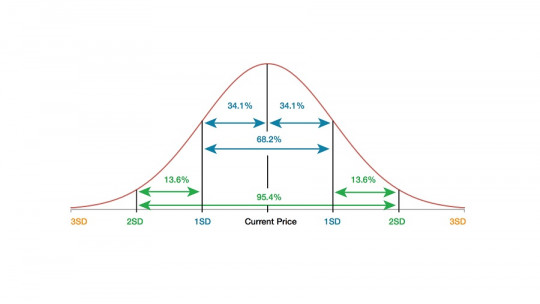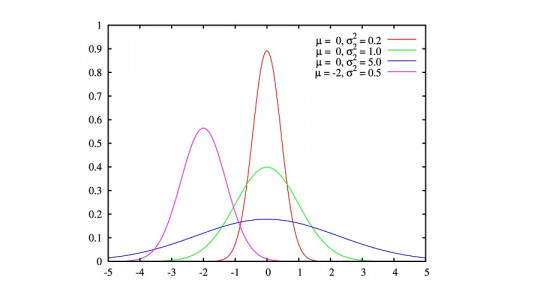
In the world of science, statistics is the basis of any statement. At the end of the day, numbers don’t lie, since they comprise their own and objective reality applicable to all processes, regardless of the culture or geographical distance of whoever applies them.
Therefore, in order to affirm (or rather, suspect) that we have discovered something, it is necessary that we can present reliable and repeatable data in a numerical language that supports it. In the world of experimentation, there must be an anchor point that we try to refute from the beginning, that is, the null hypothesis
Statistics and the scientific method seem to be disciplines and methodologies that are too complex for the general population, but nothing could be further from the truth. On this occasion, we open a small window to the world of numerical realities and basic science with the explanation of what the null hypothesis is.
What is the null hypothesis?: refuting the assumptions
In order to move comfortably in the world of hypotheses, it is necessary that we first lay the essential foundations for understanding the subject. VWe love to immerse ourselves, even briefly, in the world of the scientific method
About the scientific method
The scientific method is defined as a research method based on empirical evidence and measurement, which is also subject to the specific principles of reasoning tests. This concatenation of steps and reasoning is based on two main pillars:
In the world of science we never move in absolute dogmas. No matter how much a number supports a hypothesis, it may not fully represent reality that factors extrinsic to the experiment have not been taken into account or that the sample size is not large enough, for example.
Thus, the scientific method is based on observation, measurement, hypothesis, reproducibility, refutability and review by external agents to those who have carried out the experiment themselves.
If any reader eager for scientific knowledge finds himself in front of a typical paper from any magazine such as Science or Nature, he will be able to observe that it seems that the researchers are anything but sure of their discoveries. “It could be”, “it could mean”, “this seems to indicate”, “perhaps it exists” and other phrases dominate the paragraphs.
Furthermore, any research worth its salt ignores in its last lines that “more experimentation is required to delve deeper into the topic being discussed.” As we have seen, science, despite what the general population believes, It is based more on discarding falsehoods than on affirming absolute dogmas
Now, once we have understood the caution and distrust that we must have in the face of categorical statements in the world of science, it is time to explain what the null hypothesis is.
The false statement
According to the Royal Spanish Academy of Language, a hypothesis is defined as a supposition of something possible or impossible to draw a consequence from it. If we go to its etymological roots, we will see that the meaning of the word is contained in it, since “hypo” corresponds to “subordination / below” and “thesis” to “a conclusion that is maintained with reasoning.”
The hypothesis is an unverified statement that requires contrast with experience (i.e., an experiment) and after being refuted and proven, in the best of cases, it can become a verified statement.
In any case, to affirm that something “is”, we must also rule out that “it is not”, right? Do not despair, because we present this abstraction exercise in a more friendly way in the following lines.
Let’s take an example: we want to demonstrate that humidity plays an essential role in the spawning of a population of insects of a specific species in an ecosystem. In this case, we have two possible hypotheses:
The null hypothesis (H0) in this case corresponds to the first of the statements. Thus, we can define the null hypothesis as a statement about a parameter that maintains that two or more events are not correlated with each other
This concept is the basis of the approach of scientific hypotheses, because no matter how much you want to demonstrate a relationship between two specific parameters, you have to operate on the basis that if it has not been documented it is because it does not exist. Furthermore, any reliable investigation must do everything possible to test its hypothesis H1 (that the suspected correlation does exist). It is not about obtaining the desired result “with”, but about reaching it “in spite of”
The importance of P-value
The most attentive readers will have noticed that, in the example given above of humidity, the hypothesis that shows a correlation between this parameter and the average number of eggs contains an important term in it: significance
This is essential, since different averages are observed in the number of insect eggs, no matter how real and observable, it may be a non-significant event, that is, a product of random sampling beyond correlation.
For example, if an alien came to Earth and picked up four random 50-year-old men and three of them were 1.90 meters tall, you could safely say that 3 out of 4 humans are very tall. These data are not statistically significant, as they are due to the randomness of the sample. On the other hand, if said alien measured 3 million citizens and recorded the variations in height in all geographical locations in the world, then perhaps he would observe significant differences in the height of the species according to (x) parameters.
All these conjectures are not based on a mere reasoning process, since there are numbers that reflect the significance of the data obtained. This is the case of the “P-value”, a numerical figure that is defined as the probability that a calculated statistical value is possible given a true null hypothesis This figure is a probability that ranges between 0 and 1.
So, we are interested in the P-value being low, very low. In general, it can be said that a hypothesis H0 (remember, the null hypothesis) can be rejected when this number is equal to or less than an arbitrarily established significance level (generally 0.05). This means that the probabilities that the results obtained are the product of chance (that is, that there is no correlation between the parameters, or what is the same, that the null hypothesis is true) are very, very low.
It should be emphasized that, in any case, hypothesis testing does not allow us to accept a hypothesis in its entirety, but rather to reject it or not. Going back to the example of eggs and insects, if we obtain samples of 300 spawnings from 300 different females in 30 different locations and there are significant differences in the means according to the humidity of the ecosystem, we can say that there seems to be a relationship between the size of the cohort and the humidity parameter.
What we cannot, in any case, is affirm it as an immovable dogma. The scientific method is based on repetition and refutability, so Various research teams must repeat the experiment carried out under the same conditions and obtain equally significant results so that the correlation can be reliable and valid.
Even so, no matter how well-established the idea is in the scientific community, an entomologist can arrive and discover that, after dissecting 300 females of that species, it turns out that the red ones have a larger ovipositor apparatus and therefore lay a higher average number of eggs. Now what?
Conclusions
As we have wanted to convey in these lines, science and the scientific method in general are a series of exciting processes, but of course frustrating, since we do not stop moving in assumptions that can be refuted at any moment.
When asked “what is the null hypothesis?” We can affirm that it is the basis of any investigation, since it corresponds to the supposed reality that we want to deny, that is, that there is no correlation between the parameters that we have proposed to investigate.








